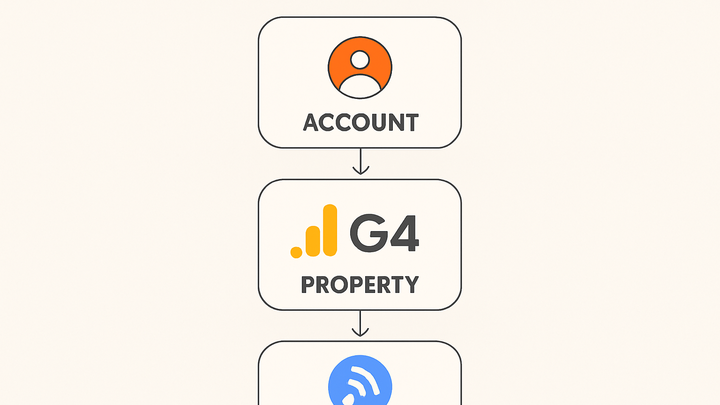Published on 2025-06-27T20:18:15Z
What is an Analytics Property? Examples in GA4 and PlainSignal
An Analytics Property is a fundamental organizational unit in web and mobile analytics platforms. It serves as a data container that collects, processes, and configures the information from your websites or apps. Within an analytics account, properties define the scope for data streams (e.g., website, iOS, Android) and house settings such as tracking codes, user permissions, data retention, and filters. For example, in Google Analytics 4 (GA4), a property is identified by a Measurement ID (G-XXXXXXXXXX) that tags data for reporting. In PlainSignal’s cookie-free analytics, a property is set up with a unique data-id which directs all event data to the correct dataset. Properly configuring multiple properties allows teams to segregate data for different environments (development vs production), brands, or product lines, ensuring accurate and privacy-conscious insights.
Analytics property
An Analytics Property is a container in analytics platforms (e.g., GA4, PlainSignal) that collects and organizes data streams.
Definition and Role
An Analytics Property is the primary grouping unit within analytics platforms. It holds configuration settings, data streams, and permissions. Properties define boundaries for data collection, ensuring that measurements from different websites or apps remain isolated and organized under the correct context.
-
Data container
A property acts as a container that aggregates data from various sources (web and app) into a unified dataset.
-
Hierarchical position
In the analytics hierarchy, a property sits under an account and above data streams or views, establishing the namespace for collected data.
Key Components
Properties consist of core components that define how data is tagged, collected, and managed. Understanding these elements is crucial for accurate tracking and reporting.
-
Measurement id
A unique identifier used to label and route incoming data. GA4 uses IDs like G-XXXXXXXXXX, while PlainSignal uses a data-id attribute.
-
Data streams
Streams represent individual sources of data (e.g., website, iOS, Android) feeding information into the property.
-
Settings and permissions
Configuration options (data retention, filters) and role-based access controls scoped at the property level.
Setting Up an Analytics Property
Implementation steps differ by platform. Below are examples for GA4 and PlainSignal integrations.
-
Google analytics 4
Create a GA4 property in the Admin panel, specify a name and time zone, then retrieve the Measurement ID to install on your site.
-
Tracking code snippet
<!-- GA4 Global Site Tag --> <script async src="https://www.googletagmanager.com/gtag/js?id=G-XXXXXXXXXX"></script> <script> window.dataLayer = window.dataLayer || []; function gtag(){dataLayer.push(arguments);} gtag('js', new Date()); gtag('config', 'G-XXXXXXXXXX'); </script>
-
-
PlainSignal
Sign in to PlainSignal, create a new property, copy the data-id and domain, then add the tracking script to your pages.
-
Tracking code snippet
<link rel="preconnect" href="//eu.plainsignal.com/" crossorigin /> <script defer data-do="yourwebsitedomain.com" data-id="0GQV1xmtzQQ" data-api="//eu.plainsignal.com" src="//cdn.plainsignal.com/plainsignal-min.js"></script>
-
Best Practices and Common Pitfalls
Optimizing property configurations improves data accuracy and governance. Avoid common missteps that can lead to fragmented or incomplete data.
-
Consistent naming
Use clear, descriptive names (e.g., “MySite Production”) to differentiate environments and avoid confusion.
-
Permissions management
Grant property-level access based on roles to prevent unauthorized changes and maintain data security.
-
Stream validation
Regularly audit active data streams to ensure only valid sources are reporting, preventing skewed analytics.
